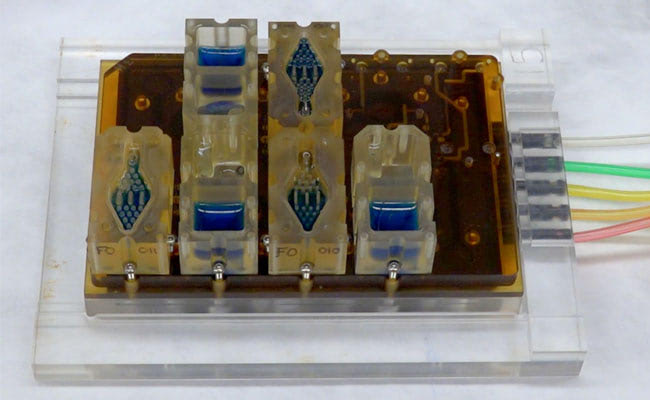The female reproductive complex is a truly complicated system made of organs and changing hormones that can seem quite obscure at times, even to a woman herself. Recently scientists managed to reproduce the entire menstrual cycle in the laboratory for the first time ever. All on a computer chip of the size of a hand, visually not resembling anything we carry in our body.
In the chip there are 3D containers mimicking the human organs and in particular the female reproductive system. As the system consists of different parts, scientists needed to take into account the cooperation of these parts, including ovaries, fallopian tubes, uterus, cervi and vagina. The containers replicate one organ at a time and are connected through small tubes functioning like the blood circulation system. Each of the mini organs was covered in real human or animal stemmcells referring to their human counterpart. Through the wired "blood circle" the organs then become able to exchange information using hormones, similar to the procedure in a woman's body.
Through the artificial mini organs scientists created a new way to study, understand and intervene in female health. Now it is possible for them to gain more data and insights into how organs communicate and how drug treatments can be personalized to react to each individual body. The next goal for the researches is to design a male opponent in order to see how both can work simultaneously.
This might be the next step in developing a whole "body on an chip", including the most precious thing we have: our brain, and its communication with the rest of our complex construction.
Source: Popsci

Share your thoughts and join the technology debate!
Be the first to comment